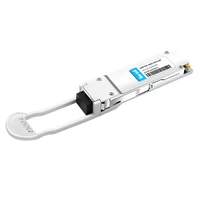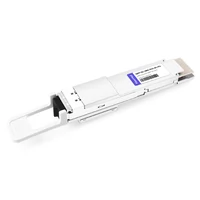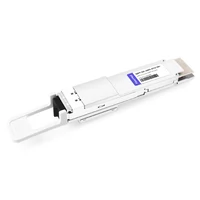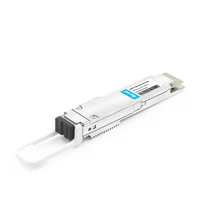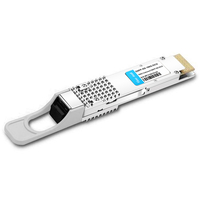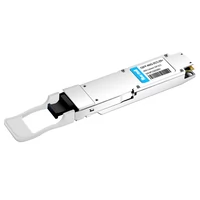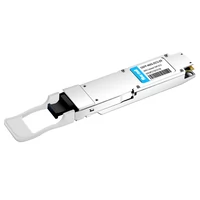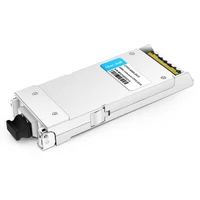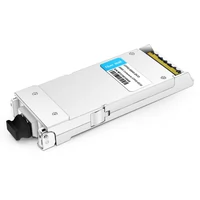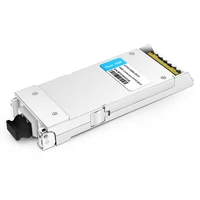There has been a skyrocketing need for faster data transfer and transmission in recent years. This stems from the ever-increasing usage of application bandwidths such as cloud computing, analytics, and especially video streaming. This demand has, in turn, driven innovations in network systems where coherent optical transceivers stand out as the significant technology development in optical communication. Coherent optical transceivers affordably utilize advanced modulation formats and digital signal processing methods to dramatically increase the capabilities or distance fiber optic networks can reach. Apart from remarkably increased data rates, these transceivers enable a better use of the available bandwidth and, therefore, represent a cost-effective and self-adjusting answer to the rising modern telecommunications networks. This paper will discuss the technical details of coherent optical transceivers, their role in managing a communication system, and the forthcoming development of communication technology based on optics.
Table of Contents
ToggleWhat are Coherent Optical Transceivers?
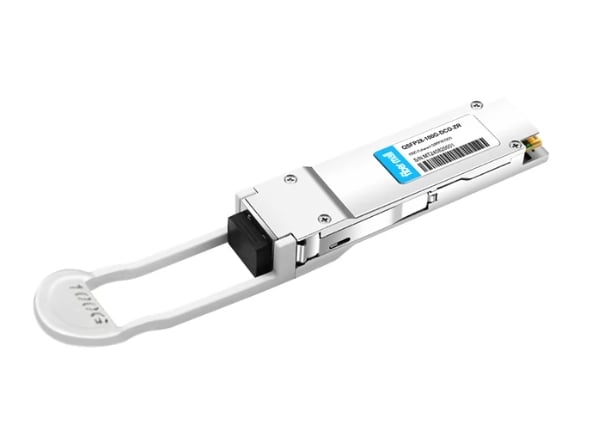
Coherent optical transceivers are sophisticated optical communication systems that send and receive information through long-distance fiber optic wires. They use coherent detection techniques that enhance the data transmission performance and the data’s resilience against signal distortions. These units use complex modulation schemes like QAM and DSP to handle interference between signals, the available bandwidth, and their corresponding losses. Therefore, coherent optical transceivers enhance the data transmission rates, bandwidth utilization, and distance coverage of the signals, thus making these devices appropriate for present and future high-performance telecommunication systems.
Understanding Coherent Optical Technology
Coherent optical technology is an advanced method for improving the effectiveness and capability of fiber optic communication systems. It employs both the amplitude and the phase of light waves for data transmission, which provides higher data rates and further distances than wavelength division multiplexing. Employing complex modulation schemes such as Quadrature Amplitude Modulation (QAM) allows more bits to be encoded in a single symbol, increasing the volume of information conveyed via one channel. Furthermore, the system’s efficiency depends on proper compensation for some signal degradation factors, such as distortion and the link as a whole via the appropriate DSP. This technology provides increased spectral efficiency and high capacity, which is ideal for modern-day telecommunication networks.
The Evolution from Traditional to Coherent Transceivers
Coherent transceivers are above the previously discussed devices since they employ cohesive technology. Everything in this segment relies on conventional transceivers, which rest solely on the light intensity for data communication through direct detection mechanisms. This puts a significant limit on capacity and range. Nonetheless, gigabits are now being sent with coherent technology as transceivers encode data on light amplitude and phase. Integrating QAM and efficient DSPs provides efficient block processing, modulation, demodulation, and many more signal functionalities needed to suppress errors and distortions in the long-distance transmission of optical signals. With these enhancement features, coherent transceivers can achieve high spectral efficiency and tolerance levels, presenting an excellent capability to operate in highly dynamic network environments. Hence, the reasons for the ever-growing bandwidth demand in telecommunications services are met decisively.
Comparing Coherent Optics to Direct Detect
The merits of coherent optics become more apparent when you compare them with direct detection methods in terms of performance and capabilities. The advantages of coherent optics above direct detection, which relies on light intensity, can be linked to applying both the amplitude and phase of the light waves in coherent optics. DQPSK is also possible with coherent systems because of its capability to handle complex modulation schemes and improve spectrum efficiency and data signal strength. There is, however, a general simplification and reduction in cost for the direct detect systems, and this comes at a significant disadvantage arising from poor compensation of the distortions during long-range transmission. Therefore, while direct detection may suffice for shorter links or lower data demands, coherent optics provide the necessary advancements for expanding bandwidth and managing the complexities of high-capacity networks.
How do Coherent Optical Transceivers Work?

The Role of DSP in Coherent Transmission
Modern structured and unstructured computer data compression, transmission, storage, and security applications employ digital signal processors (DSP). DSP incorporates many applications like data acquisition systems, data converters, voice-controlled functions, and narrowband applications. Algorithms for achieving coherent optical signal processing in transmission over a fiber waveguide are more than necessary, and the development and further deployment of DSP systems enable one to cope with problems that arise. The more complex the data is, the better. Usual DSP applications provide performance improvements by reducing noise and distortions, and they range widely from portable voice recorders to satellites, among other high-end systems enabled by advanced signal processing techniques.
Harnessing the Power of Modulation Techniques
Coherent optical transceiver modulation techniques are basic for performance and transmission limitations. Multiple bits per symbol may be transmitted using modulation techniques that involve both phase and amplitude modulation. Even more advanced formats, such as Quadrature Amplitude Modulation (QAM), improve spectral efficiency by utilizing both phase and amplitude shifts. The development of these advanced modulation formats helps coherent systems cope with the increasing demand for higher data rates and longer distances, which ensures their relevance in the current optical networks.
The Impact of Polarization on Data Transmission
Polarization is an essential aspect in the conveyance of information, especially in a coherent optical communication system. In such systems, the polarization of the light wave needs to be controlled to avoid signal losses. In Optical transmission systems, Polarization Mode Dispersion and Polarization Dependent Losses are the two factors that directly impact the integrity and stability of the data being relayed. PMD leads to the spreading of optical pulses being transmitted along the optical fiber, and PDL leads to the loss of strength of the signal directed by the orientation of the polarization. Solutions such as polarization multiplexing are used to solve this problem and further improve the efficiency and toughness of optical networks. Also, intelligent data processing techniques are applied to adapt the polarization distortion during the data transfer process so that data can be sent even through long-distance and high-capacity networks.
Why Choose Coherent Optics for Your Network?
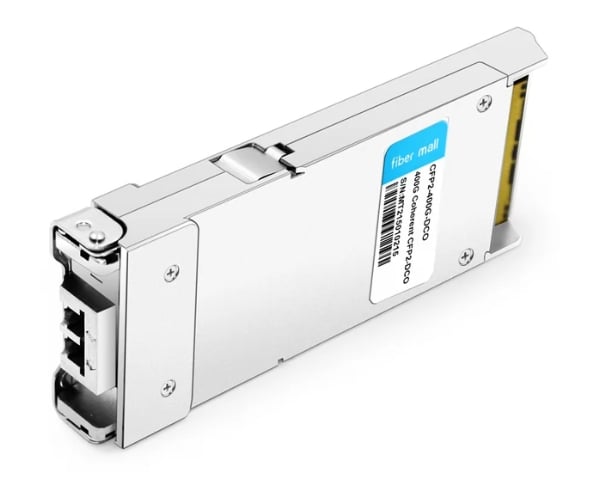
Boosting Bandwidth and Capacity
Coherent optics is the technology that improves the bandwidth and capacity of the optical networks by enhanced signal processing and modulation methods. More complex modulation formats, such as QAM, use coherent optics to achieve higher data rates for the same spectral bandwidth, which enhances the throughput immensely. In addition, the coherent systems exploit amplitude and phase data that improve the fiber bandwidth usage and increase the efficiency. Consequently, the network structures would be able to provide more scalability in response to the growing need for data transmission without the necessity of significant infrastructure change. These features and performance are why more and more organizations are migrating to coherent optics technology to ‘prepare’ their networks for the future and utilize all available operational capabilities.
Ensuring Interoperability Across Networks
Interoperability is critical to guarantee that users can communicate effortlessly across various platforms and systems in optical networks. However, the use of coherent optics achieves this by conforming to standard protocols and thus keeps, in retrospect, the present network infrastructure mainly when deploying transceivers in telecom applications. Using coherent optics makes deploying networks convenient in that different systems can be put to work without needing a significant overhaul or substitute that would incur a lot of costs. This compatibility is accomplished by using open standards and interfaces like OpenROADM, which enables the mutual integration of equipment from different vendors into a single network structure. Given the characteristics of coherent optical systems are kept within the requirements of the industry standards, the telecommunications operators will be able to operate in a complicated environment, optimize processes, work with the networks, and increase the efficiency of the development of new technologies while making the networks more sustainable and flexible.
The Scalability of 400G Coherent Technology
I have studied 400G coherent technology to enhance my understanding of its scalability through various online sources. 400G coherent technology presents a remarkable scalability potential for contemporary network systems since it achieves increased data rates using fewer wavelengths. It effectively accommodates the growing demand for bandwidth and retains both integrity and low latency, which are crucial to data-centric applications. The use of advanced modulation formats, together with digital signal processing, increases the distance reached and maximizes the capacity of fiber, thus enabling collocation with current and prospective networks. Therefore, 400G coherent technology provides a sound platform for scaling network activities to cater to future requirements without difficulties, mainly when dealing with optical transmission.
What are the Key Components of a Coherent Optical Module?
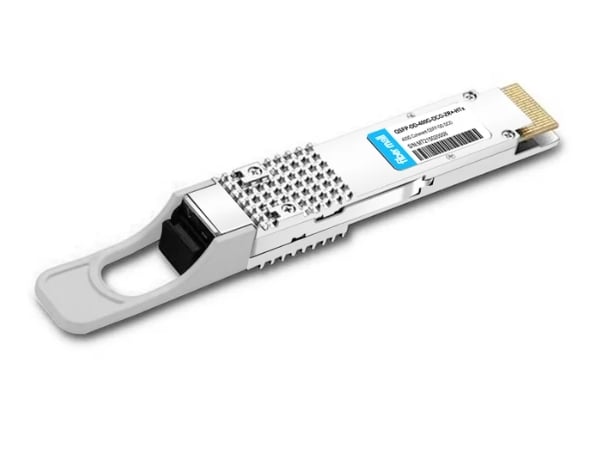
Exploring the Use of Pluggable Modules
Pluggable modules are handy today because they add options and the ability to add updates when needed. These modules, more specifically, coherent pluggable optical transceivers, allow us to deploy them scalable in diverse networks. The most current top providers claim that they integrate well with the network’s legacy infrastructure, such as additional routers within the network, and encompass various data rates and distance capabilities, especially about 400G coherent technology. In addition, since they are hot-swappable, they make upgrading and maintenance more accessible while ensuring that the network continues to run without interruption. Pluggable modules are subjected to the highest stringent requirements of the industry, which in turn ensures that different vendor equipment will be compatible and able to work with each other, increasing the network’s flexibility and resiliency in meeting the increasing bandwidth requirements.
Leveraging Tunable Lasers for Flexibility
Tunable lasers enhance the flexibility of networks, especially in terms of optical communications. These devices adjust output wavelengths as per demand and specification, allowing the adjustment of different network conditions while maximizing spectral usage. As recent leading sources show, tunable lasers suffer from low fixed-sequence lasers, reducing inventory management and allowing for the configuration of active networks. They are used in dynamic wavelength assignment, which is necessary in rerouting traffic and restoring services in case of network failures. In addition, tunable lasers help optimize bandwidth by implementing optical wavelength switching, allowing the network to meet the demand of user traffic changes. Given these aspects, tunable lasers enable the development of flexible and low-cost network operating models.
The Importance of Digital Signal Processors (DSP)
DSPs are of great value in the contemporary communication system as they can work on complex signals in real time. These application-specific microprocessors allow working with digital data to affect audio and video systems, telecommunications, radar, etc. High-performance numerical calculations dominate their architecture and expedite the performance of signal-processing tasks. DSPs provide high-quality and accurate signal transmission through various algorithms, thus allowing smooth communication across networks. Also, due to their multi-functionality, they can be incorporated into adaptive filters, noise filters, and data compressors, which are necessary to improve electronic systems’ performance and effectiveness. The use of DSPs results in greater functionality of the systems and the development of modern technology.
How to Implement Coherent Optical Transceivers in Your Network?
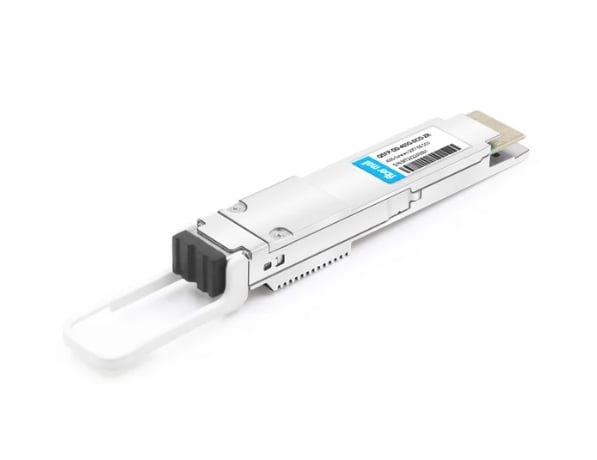
Working with Industry Leaders like Cisco and Juniper
Establishing new partnerships with such reputable businesses as Cisco and Juniper makes it easier to incorporate optical transceivers into the structure of your networks. These companies are also known to provide an excellent Active optical cable assortment of transceivers designed for high-speed data links that are very much needed in optical networks today. Cisco’s transceivers portfolio features an NCS 1.2T optical module, noted for its capacity and versatility in supported modulation formats and channel spacing. Similarly, Juniper has a range of coherent optical technologies, including ACX7100-48L, facilitating efficient network extension for service providers. They also include materials and how-tos, making network installation and configuration easy for many network specialists. The skills and technologies of Cisco and Juniper allow operators to extend their networks, making them more efficient in the present and future.
Integrating Coherent Technology into Existing Infrastructure
Integrating coherent technology into existing networks assumes a systematic direction to allow compatibility with what is already available and to enhance possible performance. The first step is assessing the network topology’s current condition and recognizing its limits and potential. This assessment informs the deployment of the right coherent optical technologies suitable for the already existing equipment and envisaged future expansion. Adopting cost-effective and scalable alternatives that may be integrated into the existing environment without drastically changing it is imperative. Finding ways to explain why some arbitrary systems may not work with existing ones is very helpful in avoiding much unrest during the execution of the systems. Besides, working with skilled network engineers and using vendor engineering documents helps ease the change endorsed and cut the intervals. With strategic foresight and application of good practices, network operators will be able to deploy coherent technology, which will, in turn, contribute to the advancement in the data rate transmission and reduce the network operational cost invariants.
Cost-Effectiveness and Future-proofing Networks
Achieving the desired cost while ensuring that the networks are ready for the future requires reconciling present assets with expected technology growth. One critical approach is to use scalable technology to decrease the total ownership cost over time, which can be reinforced as demand increases without large-scale changes. Open standards and interoperable solutions also provide significant assistance, allowing such integration to occur without being bounded by monopolistic systems. Moreover, this helps to cut costs as capital expenditures follow up with operational reliability due to the exploitation of cloud-based solutions that are scalable with demand or growth. Continuously upgrading the network facilities to harness the power of technological advancements makes the infrastructure flexible and competitive in the long term, helping to maintain efficiency in future operations.
Reference Sources
Frequently Asked Questions (FAQs)
Q: What are coherent optical transceivers, and what is their role in optical communication?
A: Coherent optical transceivers are specialized devices that concentrate on encoding data with amplitude, phase, and polarization, thus improving the performance of the optical network. They are a sophisticated technology that applies high efficiency in data transmission and expands, which in particular redefines the capabilities of optical networks.
Q: How do coherent optical transceivers compare to traditional optical communication products?
A: However, coherent optical transceivers are radically different and offer distinct advantages over conventional optical communication products, such as higher data rates, better signal transmission and reception, and signal transmission over greater distances. These advantages make them suitable for contemporary purposes in data centers and telecom.
Q: What role do multiplexing techniques play in coherent optical communication?
A: As every expert, including engineers in the field of coherent optical communication, knows, multiplexing techniques, including DWDM (Dense Wavelength Division Multiplexing), are paramount for coherent optical communication. This is necessary to increase network capacity and efficiency.
Q: What is the relevance of 400G coherent technology with optical networks?
A: The penetration of 400G coherent technology within pluggable optical transceivers was a great turn-up within optical networks, achieving high data throughput and enhanced network scalability. It also enables the use of advanced applications such as 400ZR and OpenZR for excellent data transport.
Q: How is coherent technology changing data centers and telecom applications?
A: Coherent technology allows data centers and telecom applications to leverage faster data transmission rates, enhance spectral efficiency, and increase network design flexibility. Such a transformation occurs due to the new requirements of growing data and complex networking support.
Q: What is the Optical Internetworking Forum’s (OIF) mission in promoting coherent optical transceivers?
A: The Optical Internetworking Forum (OIF) is very active in standardizing coherent optical technologies and their seamless integration into different network elements. OIF’s efforts tend to unify industry efforts and thus speed up the introduction of coherent optical transceivers in various telecom and data center settings.
Q: What coherent optical transceivers do you sell for the different form factors?
A: Coherent optical transceivers come in many form factors, such as the QSFP, Deca, and MSA form factors, that suit specific network setups and equipment modules the transceiver is required for. These form factors also allow for retrofitting into already existing systems.
Q: What are some of the challenges in deploying coherent optical transceivers?
A: Correctively utilizing optically compatible transceivers such as coherent ones requires offering specific vessels to the transceiver to avoid robust damage to the apparatus and seek the ideal strategy. However, it is of greater importance that all the struggles that coherent technology has brought are worth it due to its great benefits.
Q: 100G technology improvement: How does it link to coherent optical transceivers?
A: Developing 100 G technology has set the basis for high-speed data transfer technology. Moving from this, there was quite a leap to 400 G coherent technology, which boosted optical transfer communication and made it possible to meet high-speed and efficient networking requirements.
Related Products:
-
 QSFP28-100G-DCO-ZR 100G Coherent QSFP28 DCO C-band Tunable Optical Transceiver Module
$3600.00
QSFP28-100G-DCO-ZR 100G Coherent QSFP28 DCO C-band Tunable Optical Transceiver Module
$3600.00
-
 QSFP-DD-400G-DCO-ZR-HTx 400G Coherent High TX Power QSFP-DD DCO ZR C-band Tunable Optical Transceiver Module
$6500.00
QSFP-DD-400G-DCO-ZR-HTx 400G Coherent High TX Power QSFP-DD DCO ZR C-band Tunable Optical Transceiver Module
$6500.00
-
 QSFP-DD-400G-DCO-ZR+ 400G Coherent QSFP-DD DCO C-band Tunable Optical Transceiver Module
$6500.00
QSFP-DD-400G-DCO-ZR+ 400G Coherent QSFP-DD DCO C-band Tunable Optical Transceiver Module
$6500.00
-
 QSFP-DD-400G-DCO-ZR 400G Coherent QSFP-DD DCO C-band Tunable Optical Transceiver Module
$6000.00
QSFP-DD-400G-DCO-ZR 400G Coherent QSFP-DD DCO C-band Tunable Optical Transceiver Module
$6000.00
-
 QSFP-DD-100G-DCO 100G Coherent QSFP-DD DCO C-band Tunable Optical Transceiver Module
$5500.00
QSFP-DD-100G-DCO 100G Coherent QSFP-DD DCO C-band Tunable Optical Transceiver Module
$5500.00
-
 OSFP-400G-DCO-ZR+ 400G Coherent OSFP-DCO ZR+ C-band Tunable Optical Transceiver Module
$7000.00
OSFP-400G-DCO-ZR+ 400G Coherent OSFP-DCO ZR+ C-band Tunable Optical Transceiver Module
$7000.00
-
 OSFP-400G-DCO-ZR 400G Coherent OSFP-DCO ZR C-band Tunable Optical Transceiver Module
$7000.00
OSFP-400G-DCO-ZR 400G Coherent OSFP-DCO ZR C-band Tunable Optical Transceiver Module
$7000.00
-
 CFP2-400G-DCO 400G Coherent CFP2-DCO C-band Tunable Optical Transceiver Module
$6500.00
CFP2-400G-DCO 400G Coherent CFP2-DCO C-band Tunable Optical Transceiver Module
$6500.00
-
 CFP2-200G-DCO 200G Coherent CFP2-DCO C-band Tunable Optical Transceiver Module
$6500.00
CFP2-200G-DCO 200G Coherent CFP2-DCO C-band Tunable Optical Transceiver Module
$6500.00
-
 CFP2-100G-DCO 100G Coherent CFP2-DCO C-band Tunable Optical Transceiver Module
$6000.00
CFP2-100G-DCO 100G Coherent CFP2-DCO C-band Tunable Optical Transceiver Module
$6000.00

